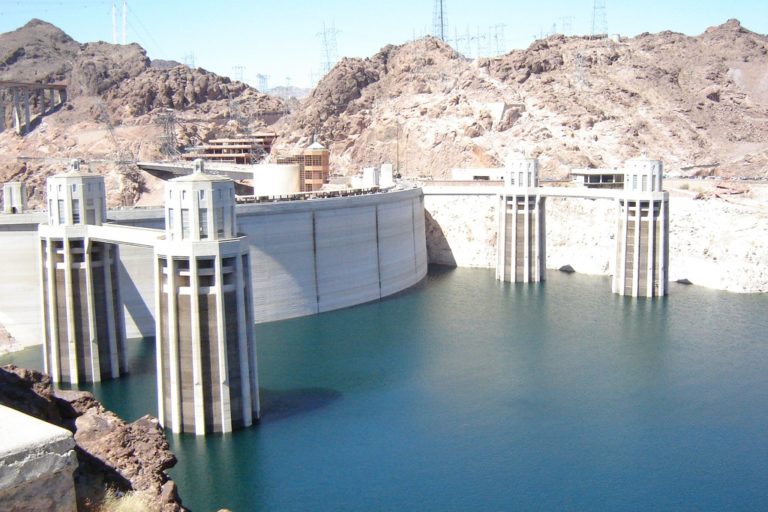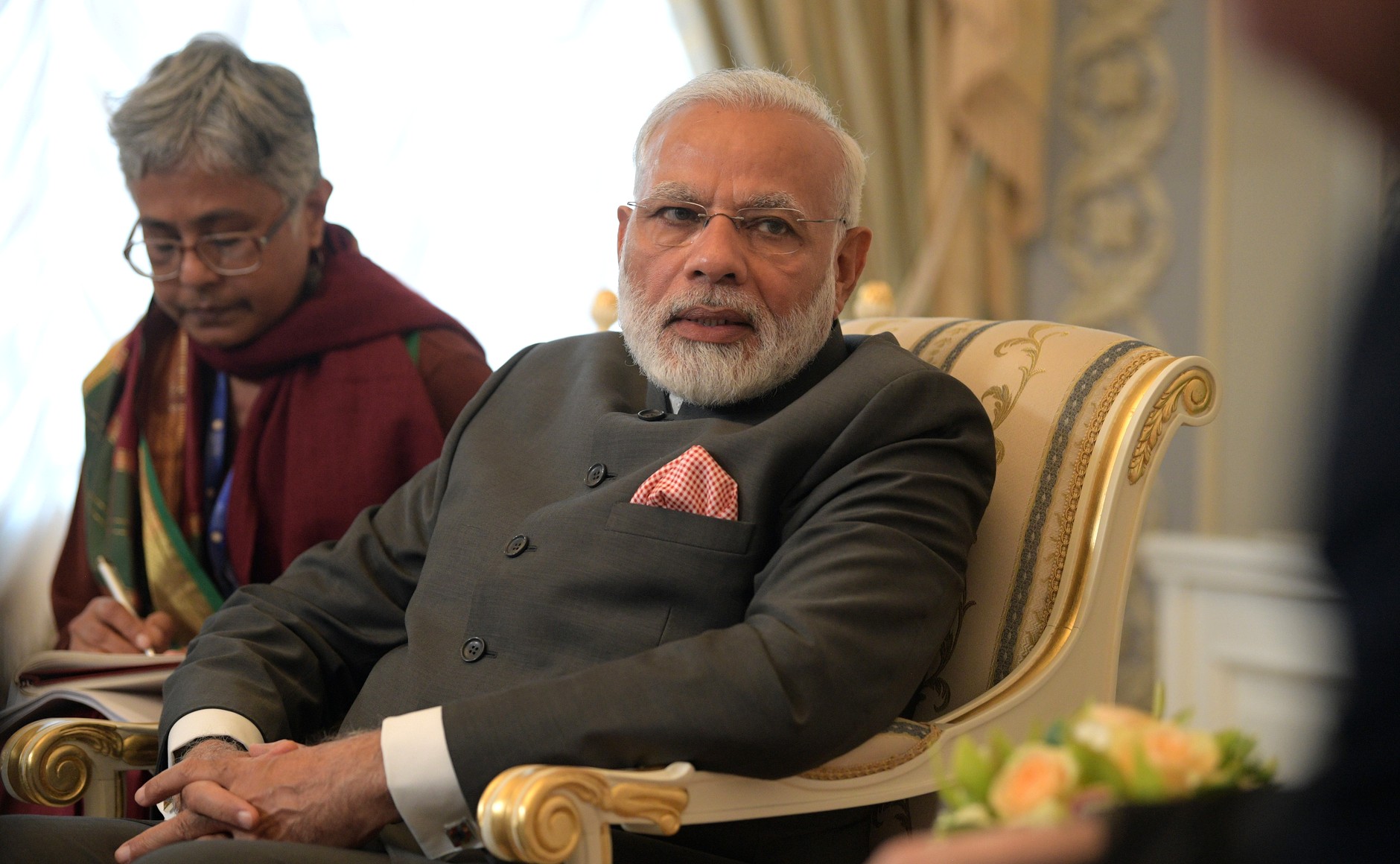
The MINT (Mexico, Indonesia, Nigeria, and Turkey) and BRIC (Brazil, Russia, India and China) countries are home to some of the fastest-growing hydropower sectors anywhere in the world.
They offer some considerable opportunities for companies involved in water power, with four of them acknowledged by the International Hydropower Association (IHA) in its recent Hydropower Status Report as having particularly fast-growing capacities in 2018.
China sat at the top of the list with 8.54GW capacity, followed by Brazil at 3.87 gigawatts (GW), while Turkey appeared in fourth place with 1.09GW and India sat in 8th position at 540 megawatts (MW).
Below International Water Power & Dam Construction (IWP&DC) highlights recent news and project developments for each of the MINT and BRIC nations, and highlights the major role hydropower has to play in each country.
Coutnries with fast-growing hydropower sectors
Mexico
Hydropower has a key role to play in the Mexican Government’s new national electricity programme.
President Andrés Manuel López Obrador is planning to increase the country’s hydropower capacity over his six-year term through new builds and rehabilitation, with the country’s state owned power utility, Comisión Federal de Electricidad (CFE), having estimated that renovation of hydroelectric plants could add another 3300MW of capacity and increase the country’s generation by 26%.
In the IHA’s Hydropower Statuts Report it noted that an additional MXN 20 billion ($985m) in investments was approved for the modernisation of 60 existing hydroelectric plants.
Indonesia
Indonesia has developed a strategy for hydropower development in the country in a bid to boost access to electricity and reduce carbon emissions.
The country has significant potential, with Minister of National Development Planning Bambang P. Soemantri Brodjonegoro, telling the IHA that the biggest hydropower potential is located in Papua Island (22.4 GW), Kalimantan Island (21.6 GW), Sumatera Island (15.6 GW) and Sulawesi Island (10.2 GW), while Java-Bali is 4.2 GW and Nusa Tenggara-Maluku is 1.1 GW.
During 2018, the IHA was involved in a capacity-building programme in the country, funded by the Swiss State Secretariat for Economic Affairs, was geared towards strengthening local institutional resources through assisted self-assessments and training.
As part of this, an official early stage assessment of the Pelosika hydropower project was carried out together with extensive capacity-building through pre-assessment training of relevant government and local government officials.
The whole process was very inclusive and involved prospective local assessors who were guided by international accredited assessors.
Nearby communities were also engaged in the process – staff from selected government departments attended training sessions on the use of the IHA’s Hydropower Sustainability Assessment Protocol (HSAP) for sustainability assessment, with the group participating in the HSAP “early stage” assessment.
This provided key members of staff with first-hand experience of assessment activities covering preparation, auditing, reporting and presentation of results.
The assessment results were then shared with government stakeholders in workshop sessions, showing the value of the HSAP as an evidence-based decision-making tool, while also raising awareness of international good practices.
There is currently 6GW of capacity under-construction or in planning in the country, so such initiatives are considered key for sustainable development.
One project that was recently completed was the 56MW Semangka project on the island of Sumatra, which will help replace fossil fuel fired power plants which currently dominate the island’s gird.
Nigeria
Nigeria is the 8th biggest country in Africa in terms of total installed capacity of hydropower (2064MW).
The total exploitable potential of hydropower in the country has been estimated at over 14,120 MW, meaning there are major opportunities for development.
A number of new projects are in planning and development in the country, including the 360MW Gurara II hydroelectric project in Kaduna State, for which a $1bn loan from China has been approved.
Back in 2017, Nigeria awarded a $5.8bn contract to a consortium of Chinese state-owned construction firms to build the 3050MW Mambila project, the country’s largest power plant.
The project will reportedly will feature four dams which will vary in height between 50 and 150 metres, and is being majority-funded by the Chinese Export-Import Bank.
Another project being built with Chinese assistance is the 700MW Zungeru hydroelectric facility on the upper and middle reaches of Kaduna River in Niger State.
Construction works on the power plant started in May 2013 and were expected to take 60 months for completion.
However, legal and financial challenges related to ecological settlement in the affected area delayed the project commissioning to 2021.
Turkey
Turkey led Europe in new installed capacity additions last year, adding over 1GW at greenfield sites.
Recent project’s commissioned in the country include the 625MW Upper Kaleköy project – which is one of a cascade of six projects along the Murat River, including the 580MW Beyhan 1 project completed in 2015, and the 500MW Lower Kaleköy project scheduled for completion in 2020.
Also commissioned in 2018 was the 140MW Kiğı project.
This year, the European Bank for Reconstruction and Development (EBRD) approved an investment of $100m in a stake of hydropower developer Içtaş Sürdürülebilir Enerji Yatırımları, the renewable energy arm of Turkey’s IC Energy Holding.
The firm operates 400MW of hydropower through ten plants.
Brazil
Brazil is now the second fastest-growing country in the world after China in terms of added hydropower capacity, overtaking the US.
It contributed 80% of South America’s new capacity, according to the Hydropower Status Report.
The country has, however, been subject to significant criticism when it comes to hydropower development – particularly with regards to the Amazon region – and its hydropower sector has struggled financially in recent years.
Recently a group of hydropower developers and operators formed the Forum for the Development of Midsize Hydropower Plants in a bid to strengthen private sector investments in hydropower, following the government’s decision to end concession auctions for new hydropower projects larger than 30MW.
Despite this, hydropower development is still underway – Iberdrola, through its Brazilian affiliate Neoenergia, officially opened the 350MW Baixo Iguaçu hydroelectric power plant in the country in May 2019.
The plant, which required an investment of more than €500m ($561m), will control the water flow of the Iguaçu falls, one of the seven natural wonders of the world.
It will also supply sustainable energy to one million Brazilians and its production is equivalent to nearly 8% of the annual electricity demand of the State of Paraná, where the project is located.
During the inauguration event, chairman of Iberdrola José Ignacio Sánchez Galán stressed that the company was “proud to contribute to the economic and social development of the country” and announced that Iberdrola’s commitment will continue to increase.

“Over the next five years alone, we are going to invest around €6.5bn ($7.3bn) in new projects in Brazil to continue improving country’s electricity supply and, thus, its competitiveness,” he said.
“This facility is of benefit to the Iguaçu Falls, as it contributes to maintain the minimum water flows required.
“In addition, many initiatives have been undertaken in the areas of health, education, infrastructure, public safety and biodiversity in order to preserve and enhance the well-being of the region.”
This new renewable energy infrastructure has been built maintaining the highest standards of quality and respect for the environment, according to Iberdrola.
The water channel has not been modified – of the 31km2 of the plant’s reservoir, more than 20km2 belongs to the river itself.
Also, thanks to the use of three Kaplan turbines, the necessary flooding area is significantly smaller than that of other hydroelectric plants of similar size.
The firm claims another important aspect of this power plant is that it will have a positive impact on the flow of water over the Iguaçu Falls.
The flow of the waterfalls can be affected during periods of drought, and were diminished to mere trickles in 2006.
A report by the National Electric System Operator (ONS) has concluded that, thanks to the contribution of this hydroelectric power plant, the famous falls will always have the minimum necessary water flow.
The Baixo Iguaçu facility is making an important contribution to the environment through the Consorcio Empresarial Baixo Iguaçu (CEBI), which has carried out several environmental programmes to monitor, rescue and conserve local species living around the plant, while a green corridor for wildlife has also been built.
Russia
In Russia, the ongoing modernisation of hydropower projects is considered a key priority.
Recently, in Siberia, turbine repairs and upgrades were completed at the 3840MW Ust-Ilimsk station, with underway at the 662MW Irkutsk and 6000MW Krasnoyarsk facilities.
In western Russia the 1375MW Saratov station is undergoing modernisation and the 34MW Zaramagskaya-1 is under construction near the Georgian border.
Meanwhile, in July 2019, RusHydro announced it is to start construction of the Krasnogorskaya-1 and Krasnogorskaya-2 small hydropower plants on the Kuban river in Karachay-Cherkessia Republic.
The two hydropower stations, due to be commissioned between 2021 and 2022, will each have an installed capacity of 24.9MW and annual output of 83.8GWh and will be built downstream from the company’s Zelenchukskaya hydro and pumped storage power plant.
They are expected to improve the hydrological regime of Kuban River, lifting limitations on capacity of Zelenchukskaya, which is currently set at 70MW- the regime optimisation will add 230 GWh to output of Kuban Cascade annually.
“Development of renewable generation such as small hydro has always been an important part of the business for RusHydro,” explained Nikolay Shulginov, chairman of the management board and general director of RusHydro.

“Within the year, we plan to commence construction of three small hydropower plants in the North Caucasus region and today we lay the foundation for construction of two Krasnogorskaya-1 and 2 small HPPs.
“Despite their small-scale these plants will have a significant positive impact on the power system of the Karachay-Cherkessia Republic.”
RusHydro is actively developing hydropower generation in Karachay-Cherkessia.
In 2016, the company commissioned two hydropower units of Zelenchukskaya with capacity of 140/156MW (generation mode /pumping mode) and in 2018 commissioned a small hydropower plant on the Zelenchuk river with capacity of 1.2MW, while construction on the 5.6MW Ust-Dzhegutinskaya hydropower plant is in progress.
Earlier this year, Power Machines announced that 14 out of 18 hydropower units have now been refurbished at RusHydro’s Cheboksarskaya hydropower plant, with unit number three placed into operation in April.
Meanwhile, in Russia’s far east, RusHydro this year commissioned the third unit at its Ust-Srednekanskaya hydropower plant, which is currently under construction on the Kolyma River in the Magadan region of Russia’s Far Eastern Federal District.
The commissioning increases the plant’s installed capacity almost two fold – from 168MW to 310.5MW.
Ust-Srednekanskaya is located 217km downstream from the operating Kolymskaya, completed in 2011 power plant and is built in extreme natural conditions.
Permafrost in the region is 300 metres thick and outside winter temperatures goes down to 60 degrees centigrade below zero.
The facility’s third unit construction phase includes increasing the dam to 66 metres, replacement of temporary runners with regular more powerful ones and commissioning of the third hydropower unit.
The overall length of the earth-filled dam and two concrete dams upon completion will reach over 2km, while its completion, scheduled for 2023, would allow the plant to reach a project capacity of 570MW and long-run annual output of 2.55 billion kWh.
In other news, in Russia it was announced in June that Voith subsidiary VolgaHydro opened its new production plant in Balakovo, Russia, with the facility set to produce and assemble components for hydropower plant turbines.
Around 100 new jobs have been created within the plant in the Saratov Region, with plans for another 100 in the pipeline, while total investment for the project amounts to 2.5 billion Russian ruble ($40m).
“With the new plant in Balakovo, Voith deepens its position on the Russian market. This means that the new production facility will benefit from our innovative developments and technologies for the design and fabrication of hydropower components and we can serve our Russian clients fully locally,” said Dr Leopold Heninger, CEO & president of Voith Hydro Europe.

“Furthermore, the company will be involved in hydropower projects in the CIS countries.”
VolgaHydro was founded in 2013 as a joint venture between Voith and RusHydro, one of the world’s largest producers of energy from hydropower.
The company is designated to become the innovation centre in Russia, contributing to the development of national science and engineering in the field of hydropower and in 2016, it celebrated the official laying of the foundation stone for the new production plant in Balakovo.
In February 2019, Voith acquired the share in the joint venture from RusHydro.
India
According to reports from news agencies in the country, India is looking to add 1190MW of hydropower capacity this year – a significant step up from last year where its goal was to add 840MW but it only achieved 140MW.
Most of the capacity additions this year is expected to come from the 600MW Kameng hydropower project in Arunachal Pradesh, with another 211MW to be commissioned in Himachal Pradesh, with companies in the private sector expected to add 379MW in total.
These include GMR’s 180MW Bajoli Holi project in Himachal Pradesh, L&T’s 66MW Singoli Bhatwari project in Uttarakhand and the 100MW Sorang project, also in Uttarakhand.
With regards to new development, Voith announced in March it had been awarded a contract to deliver four 250 MW Francis turbines and generators, together with auxiliary equipment, for Pakal Dul hydropower plant in Indian state of Jammu and Kashmir (J&K).
The technology company signed the deal earlier this year with Chenab Valley Power Projects Private Limited (CVPPPL), a joint venture company of NHPC, JKSPDC and PTC
The Pakal Dul hydropower plant is of high national importance, as it will provide immense benefits for the people living in J&K in terms of improved power supply, employment generation and infrastructure creation after commissioning, while the project will further enhance the footprint of Voith in the state.
The company had previously led the consortium that delivered six units of 150MW in two stages at Baglihar hydropower plant for the state utility Jammu and Kashmir State Development Corporation (JKSPDC).
And it is also executing the Salal Runner replacement project for six units of 115 MW for National Hydro Electric Power Corporation Private Limited (NHPC).
Also in March this year, Indian state utility company Karnataka Power Corporation Ltd awarded Andritz a contract to refurbish and renovate the Shivasamudram hydropower plant, one of Asia’s oldest, located in the southern state of Karnataka.
Indian hydropower development is expected to be boosted following the government’s announcement earlier this year that it would be classed as a renewable energy source.
Previously, only projects under 25MW were declared renewable, but now all hydropower comes under this description.
The Union Cabinet, chaired by Prime Minister Narendra Modi, also declared large hydropower projects as part of non-solar Renewable Purchase Obligation, which will cover all projects commissioned from now on (small hydro is already covered).

Tariff rationalisation measures were also introduced which includes providing flexibility to developers to determine tariff by back loading of tariff after increasing project life to 40 years, increasing debt repayment period to 18 years and introducing an escalating tariff of 2%.
China
Construction is underway in earnest on a number of hydropower projects in China, with a particular focus on pumped storage, which is considered essential to provide flexibility to the power system.
Last year saw the commissioning of both the 1200MW Shenzhen station and the 600MW Qiongzhong station, while civil works are also underway on the 1200MW Fu Kang, 1800MW Jurong and 1200MW Yongtai projects.
With regards to conventional projects, the 1900MW Huangdeng, 348MW Sha Ping II, 920MW Dahuaqiao and 420MW Li Di stations were commissioned in 2018.
Construction work started this year on the 2.24GW Yebatan hydropower project on the Jinsha River in the Tibet Autonomous Region, to be built by China Huadian Corporation at the junction of Baiyu County in southwestern Sichuan Province and Konjo County.
It is expected to cost around $5bn, with the first unit at the plant scheduled to go online in 2025, when it will become the largest hydropower project on the upper reaches of the Jinsha River.
Earlier this year, Dongfang Electric Machinery Co also delivered the runner for a major generating unit at the 16GW Baihetan hydropower project in China.
The station is designed to have 16 domestically-manufactured generating units each with a 1GW capacity, and it will be the second-largest hydropower station after the Three Gorges project in terms of total installed capacity.






